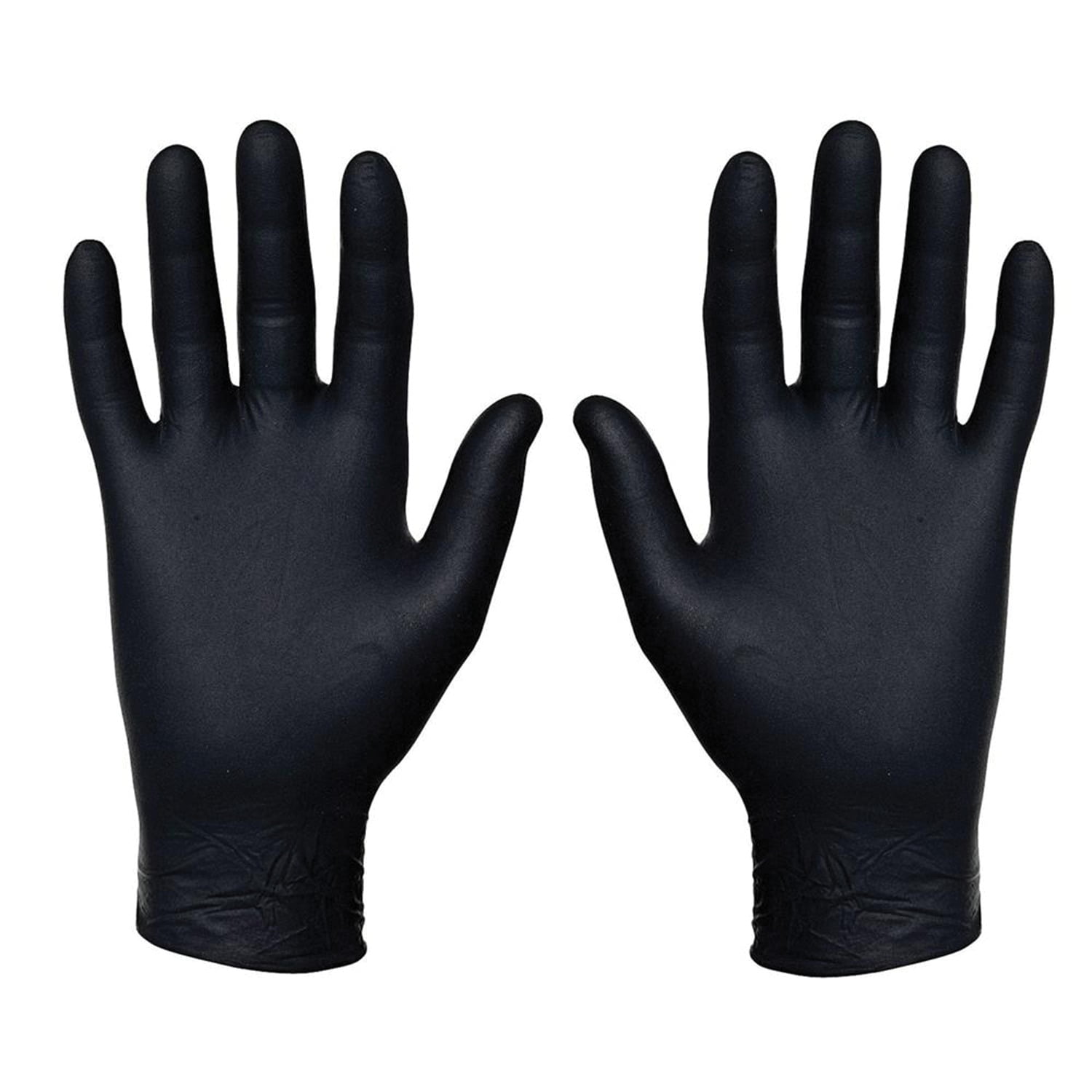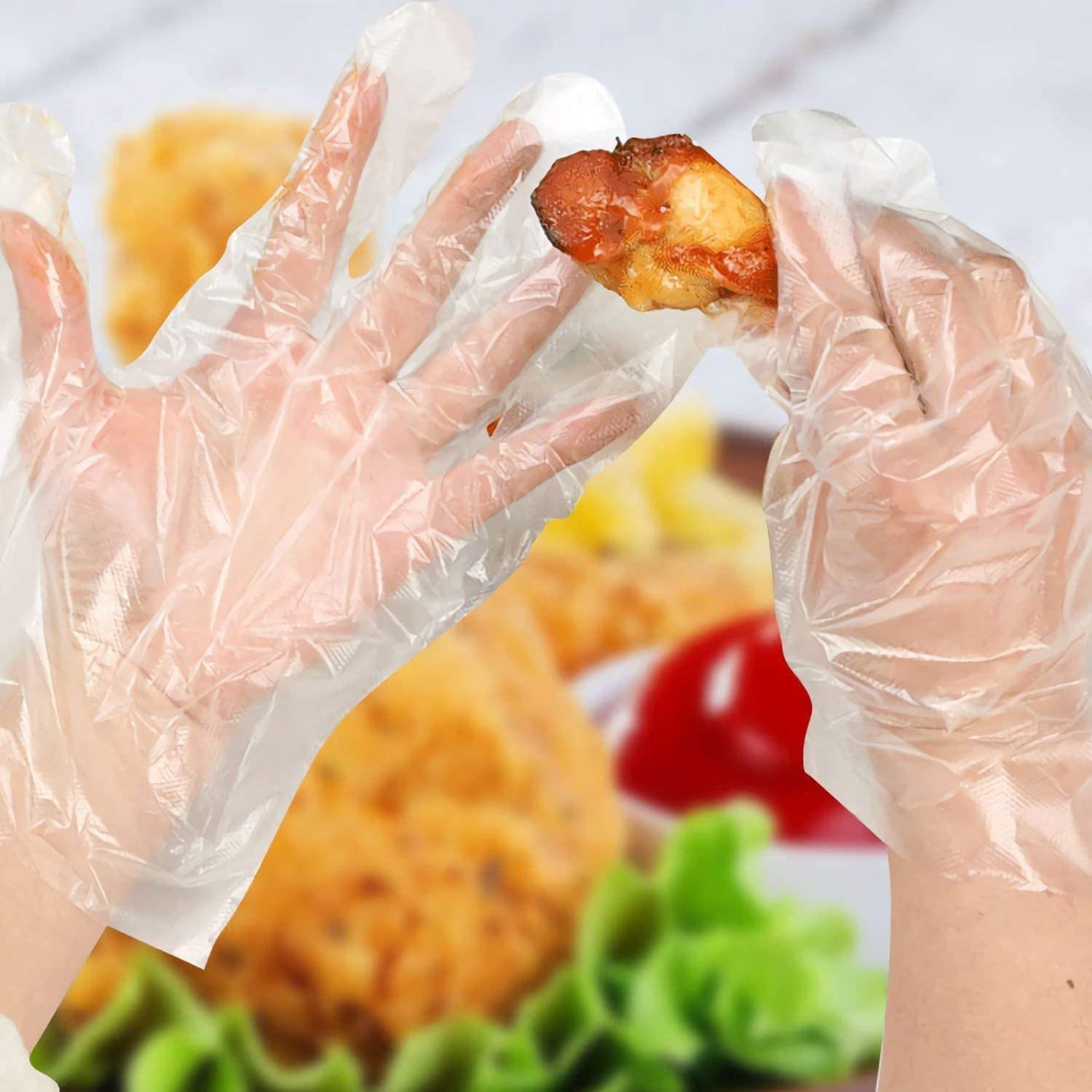Food service gloves play a crucial role in ensuring the safety and hygiene of food handling in the hospitality industry. From preventing cross-contamination to maintaining cleanliness, these gloves are essential for safeguarding both customers and food preparers.
In this comprehensive guide, we will explore the different types of food service gloves available, their benefits, and the regulations governing their use. We will also provide a step-by-step guide for their proper use and disposal, as well as discuss their role in allergen management and food preparation and handling.
Types of Food Service Gloves
Food service gloves are essential for maintaining hygiene and protecting both the food and the food handler. They come in various materials, each with its advantages and disadvantages.
Materials Used in Food Service Gloves
The primary materials used in food service gloves include latex, nitrile, vinyl, and polyethylene.
Latex
- Advantages:Flexible, comfortable, and provides a good grip.
- Disadvantages:Not suitable for individuals with latex allergies, can tear easily, and may cause skin irritation.
- Best suited for:General food handling, such as preparing salads or sandwiches.
Nitrile
- Advantages:Durable, puncture-resistant, and chemical-resistant.
- Disadvantages:Less flexible than latex, can be more expensive.
- Best suited for:Handling oily or greasy foods, cleaning, or working with chemicals.
Vinyl
- Advantages:Inexpensive, lightweight, and non-allergenic.
- Disadvantages:Less durable than latex or nitrile, can tear easily.
- Best suited for:Short-term tasks, such as handling dry foods or serving customers.
Polyethylene
- Advantages:Disposable, inexpensive, and can be used for a variety of tasks.
- Disadvantages:Not as durable as other materials, can be difficult to put on and take off.
- Best suited for:Light-duty tasks, such as handling fruits or vegetables.
Benefits of Using Food Service Gloves
Maintaining the highest standards of food safety and hygiene is paramount in the food service industry. Food service gloves play a pivotal role in ensuring the well-being of patrons and safeguarding the reputation of food establishments.
By donning gloves, food handlers create a physical barrier between their hands and the food they handle. This simple yet effective measure significantly reduces the risk of cross-contamination, preventing the spread of harmful bacteria and viruses.
Prevention of Cross-Contamination
Foodborne illnesses can have severe consequences, ranging from mild discomfort to life-threatening conditions. Gloves serve as a protective layer, minimizing the transfer of pathogens from food handlers’ hands to food items and vice versa. This is particularly crucial when handling raw meat, poultry, or seafood, which can harbor harmful microorganisms.
Maintaining Cleanliness
Gloves also aid in maintaining a clean and sanitary work environment. They prevent direct contact between food handlers’ hands and surfaces that may be contaminated, such as countertops, utensils, and equipment. This reduces the likelihood of food becoming contaminated during preparation, storage, and serving.
Statistical Evidence
Numerous studies have demonstrated the effectiveness of food service gloves in preventing foodborne illnesses. A study published in the Journal of Food Protection found that the use of gloves reduced the incidence of Salmonella contamination on chicken carcasses by 80%. Another study conducted by the Centers for Disease Control and Prevention (CDC) revealed that restaurants that required their staff to wear gloves had a 50% lower risk of foodborne illness outbreaks.
Regulations and Standards for Food Service Gloves

Food service gloves play a critical role in maintaining food safety and hygiene in the food industry. Several regulations and standards govern their use to ensure the gloves meet specific requirements and protect both consumers and food handlers.
The Food and Drug Administration (FDA) regulates food contact materials, including food service gloves, under the Federal Food, Drug, and Cosmetic Act (FD&C Act). The FDA sets forth guidelines for glove materials, thickness, durability, and other specifications to ensure they are safe for use with food.
Glove Specifications
The FDA’s regulations specify that food service gloves must meet certain criteria, including:
- Thickness:Gloves must have a minimum thickness to provide adequate protection against punctures and tears.
- Durability:Gloves must be durable enough to withstand the rigors of food handling, such as repeated washing and disinfection.
- Fit:Gloves must fit snugly to prevent food contamination and provide comfort to the wearer.
- Materials:Gloves must be made from materials that are safe for food contact, such as nitrile, latex, or vinyl.
Consequences of Non-Compliance
Non-compliance with food service glove regulations can have serious consequences, including:
- Food contamination:Improperly used or non-compliant gloves can introduce bacteria or other contaminants into food.
- Health risks:Contaminated food can lead to foodborne illnesses, posing health risks to consumers.
- Legal liability:Food establishments that fail to comply with glove regulations may face legal action and fines.
Therefore, it is essential for food handlers to adhere to the regulations and standards governing the use of food service gloves to ensure the safety of both consumers and food.
Proper Use and Disposal of Food Service Gloves
Food service gloves play a vital role in maintaining food safety and hygiene. To ensure their effectiveness, it’s crucial to follow proper use and disposal guidelines. This guide provides a step-by-step approach to using and discarding food service gloves safely and efficiently.
When to Change Gloves
- After handling raw meat, poultry, or seafood
- After touching contaminated surfaces or equipment
- After handling garbage or cleaning materials
- After coughing, sneezing, or blowing your nose
- After any activity that could compromise glove integrity
How to Change Gloves
- Grasp the glove at the wrist and peel it off, turning it inside out.
- Do not touch the outside of the glove with your bare hand.
- Immediately wash your hands with soap and water.
- Put on a new pair of gloves.
How to Dispose of Gloves
- Dispose of gloves in a designated waste container lined with a plastic bag.
- Do not reuse or recycle food service gloves.
- Wash your hands thoroughly after disposing of gloves.
Gloves and Allergen Management

Food service gloves play a crucial role in preventing cross-contamination of allergens, ensuring the safety of individuals with food allergies and sensitivities. Allergens can be easily transferred through direct contact with food or surfaces that have come into contact with allergens.
Types of Allergens
- Peanuts and tree nuts
- Milk and dairy products
- Eggs
- Wheat and gluten
- Fish and shellfish
li>Soy
Glove Selection and Use
To minimize the risk of allergen exposure, it is essential to select and use food service gloves appropriately. Gloves should be made of durable, non-porous materials that can effectively prevent allergen transfer. It is recommended to use different colored gloves for different food preparation areas to avoid cross-contamination.
Gloves should be changed frequently, especially when handling different types of food or after coming into contact with allergens. Proper handwashing should be performed before putting on new gloves.
Gloves in Food Preparation and Handling
In the culinary realm, gloves serve as an essential barrier between food and the hands of those preparing and handling it. Their use plays a pivotal role in maintaining food quality and safety, preventing the transfer of harmful microorganisms and allergens.
Specific Tasks Requiring Gloves
The use of gloves is particularly crucial during specific tasks in food preparation and handling. These tasks include:
- Cutting and slicing:Gloves protect hands from sharp utensils and prevent potential cuts or lacerations.
- Cooking:Gloves shield hands from heat and steam, reducing the risk of burns or scalds.
- Serving food:Gloves prevent direct contact with ready-to-eat foods, minimizing the risk of contamination from hands.
By adhering to glove use protocols during these tasks, food service professionals ensure the highest standards of hygiene and safety in food preparation and handling.
Gloves in Food Storage and Transportation
Food service gloves play a crucial role in maintaining food safety during storage and transportation. They help prevent cross-contamination by creating a physical barrier between food and potential contaminants.
During storage, gloves can help protect food from bacteria, viruses, and other microorganisms that can cause foodborne illnesses. They also prevent direct contact between food and food handlers’ hands, reducing the risk of transferring harmful substances to food. Similarly, during transportation, gloves can protect food from contamination by dirt, dust, and other environmental hazards.
Best Practices for Glove Use in Food Storage and Transportation, Food service gloves
- Use gloves that are appropriate for the task.Different types of gloves are designed for different purposes. Choose gloves that are resistant to the chemicals and temperatures involved in food storage and transportation.
- Change gloves frequently.Gloves should be changed whenever they become soiled or torn. This helps prevent cross-contamination.
- Wash hands before putting on gloves.This helps remove any bacteria or viruses that may be on your hands.
- Inspect food carefully before storing or transporting it.Look for any signs of damage or contamination. If you find any, do not store or transport the food.
- Store food properly.Food should be stored in clean, covered containers. This helps protect it from contamination.
- Transport food in clean, temperature-controlled vehicles.This helps prevent food from spoiling or becoming contaminated.
Glove Design and Innovation

The food service industry is constantly evolving, and with it, the design of food service gloves. In recent years, there have been a number of innovations in glove design that have enhanced their performance and made them more comfortable to wear.
One of the most significant innovations in glove design has been the development of new materials. These materials are more durable, resistant to punctures and tears, and provide a better grip than traditional materials. As a result, gloves made from these materials can last longer and provide better protection for the wearer.
Another innovation in glove design has been the development of new technologies. These technologies include antimicrobial coatings, which help to prevent the growth of bacteria on the gloves, and moisture-wicking fabrics, which help to keep the wearer’s hands dry and comfortable.
The benefits of these innovations in glove design are numerous. Gloves made from new materials are more durable and provide better protection for the wearer. Gloves made with new technologies are more comfortable to wear and help to prevent the growth of bacteria.
As a result, these gloves can help to improve food safety and efficiency in the food service industry.
Single-Use Gloves
- Single-use gloves are the most common type of glove used in the food service industry.
- They are made from a variety of materials, including latex, nitrile, and vinyl.
- Single-use gloves are typically discarded after one use.
Reusable Gloves
- Reusable gloves are made from a more durable material than single-use gloves.
- They can be washed and reused multiple times.
- Reusable gloves are often used in food preparation and handling areas where there is a high risk of contamination.
Chemical-Resistant Gloves
- Chemical-resistant gloves are made from a material that is resistant to chemicals.
- They are used in areas where there is a risk of exposure to chemicals, such as cleaning and sanitation areas.
- Chemical-resistant gloves are often made from nitrile or neoprene.
General Inquiries
What are the different types of food service gloves available?
Food service gloves come in various materials, including latex, nitrile, vinyl, and polyethylene. Each material has its advantages and disadvantages, such as durability, comfort, and resistance to chemicals.
How do food service gloves help prevent cross-contamination?
Food service gloves act as a barrier between food and the hands of food handlers, preventing the transfer of bacteria and other contaminants from one food item to another.
What are the regulations governing the use of food service gloves?
The use of food service gloves is regulated by various agencies, such as the FDA and OSHA. These regulations specify the requirements for glove thickness, durability, and other specifications to ensure their effectiveness in preventing contamination.
